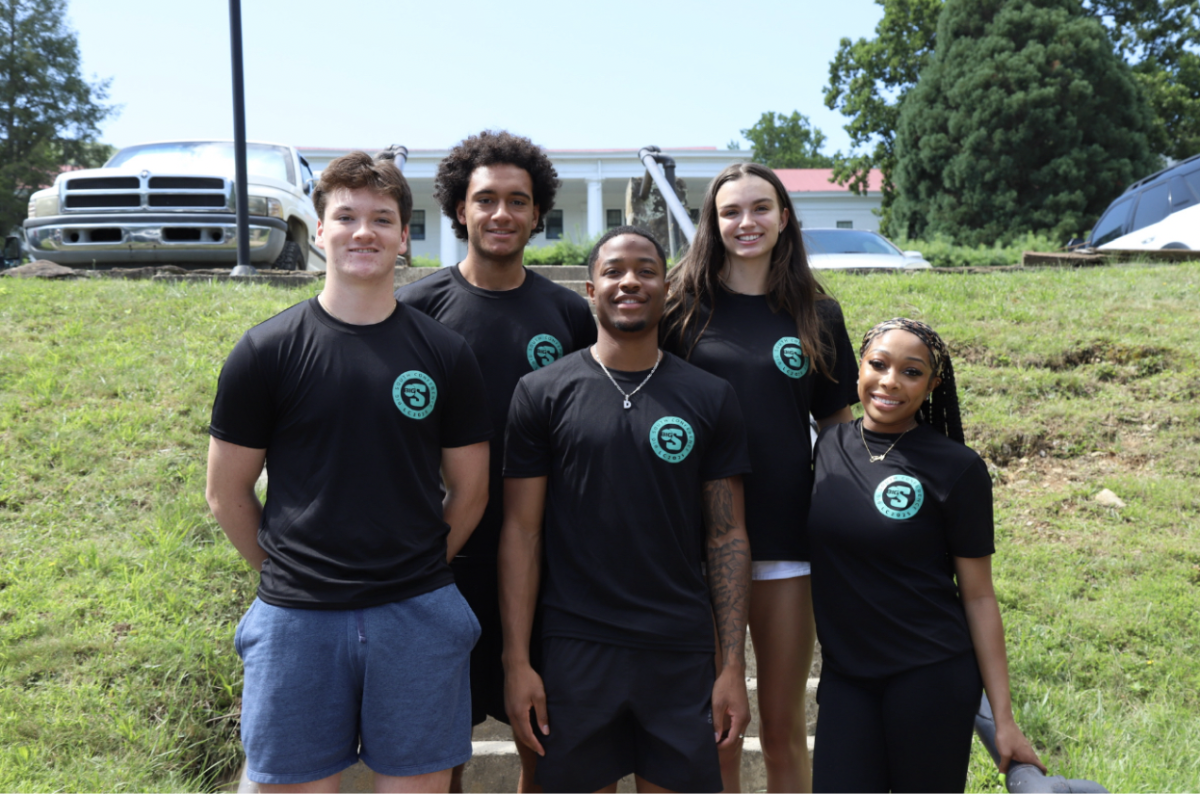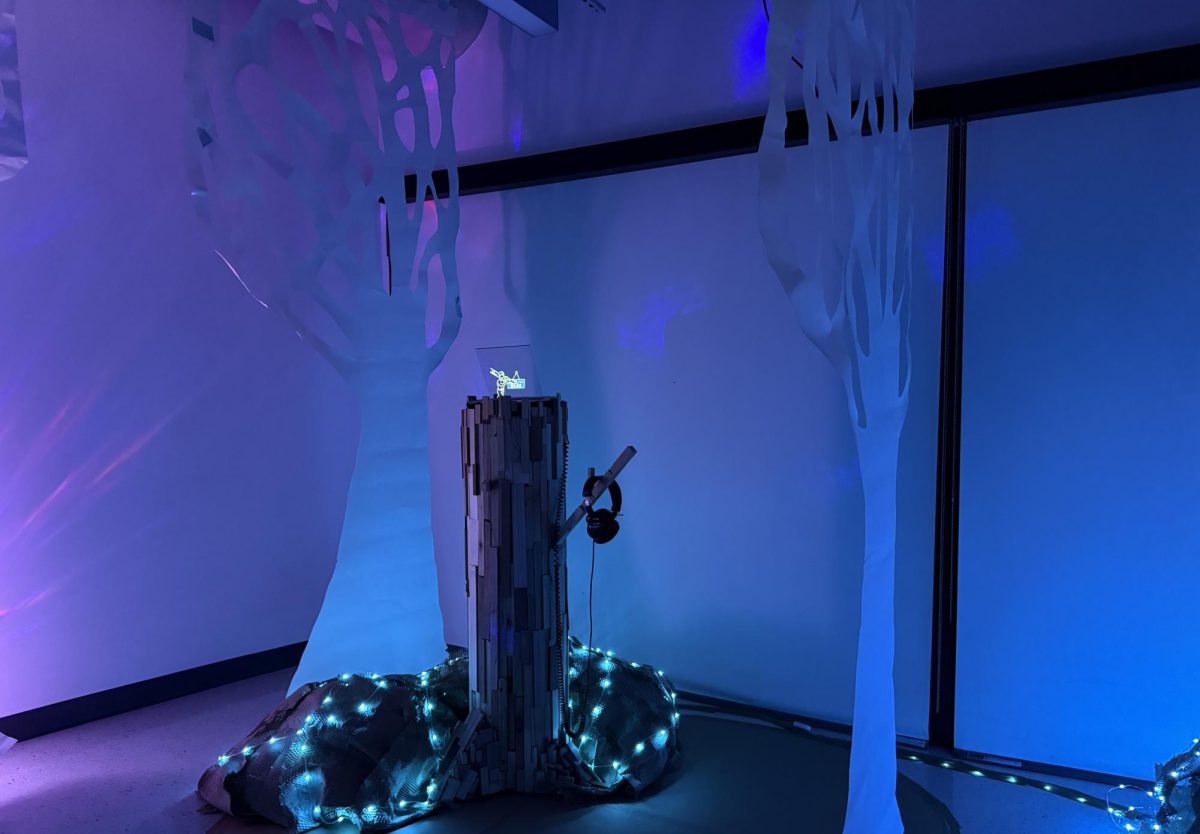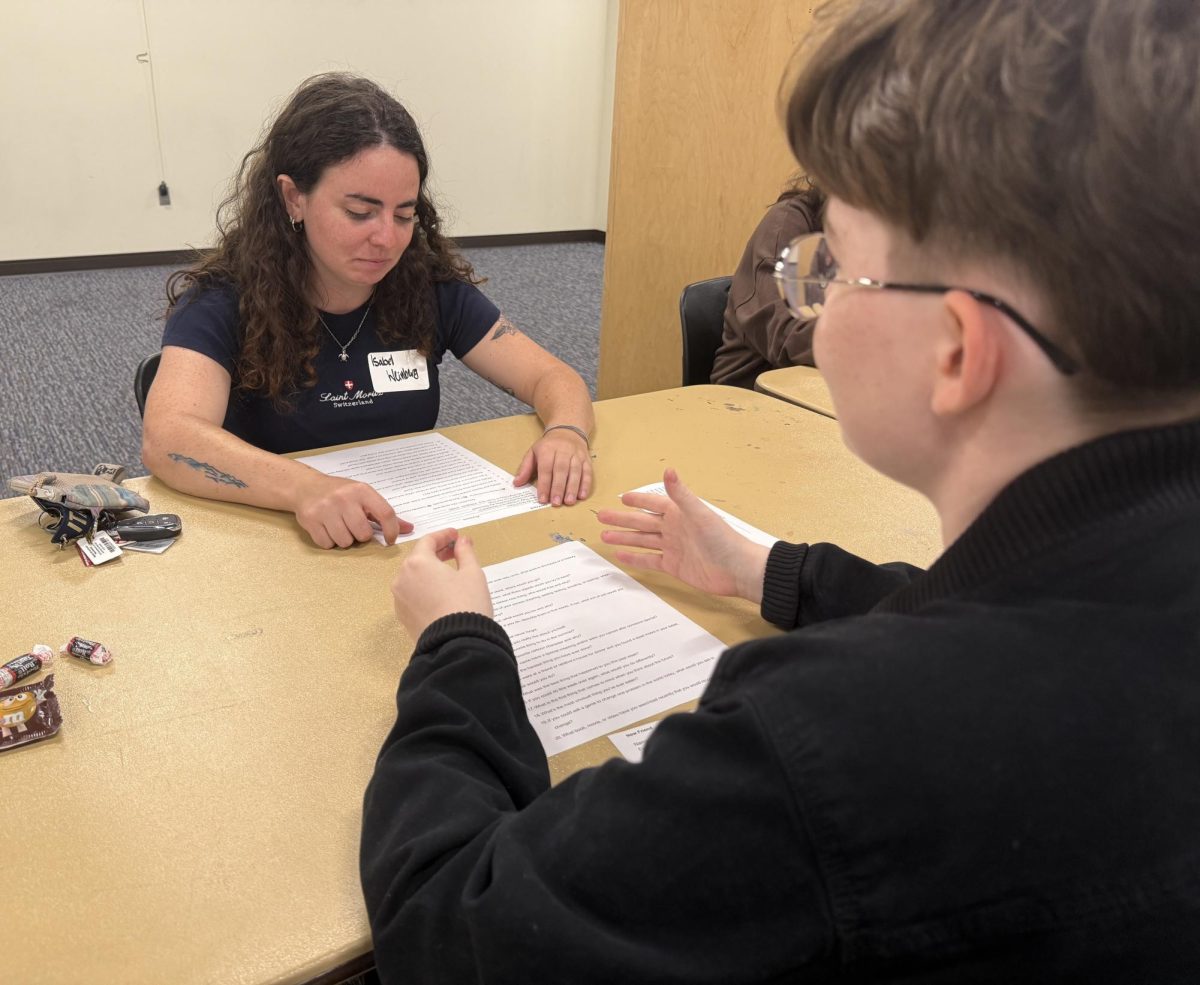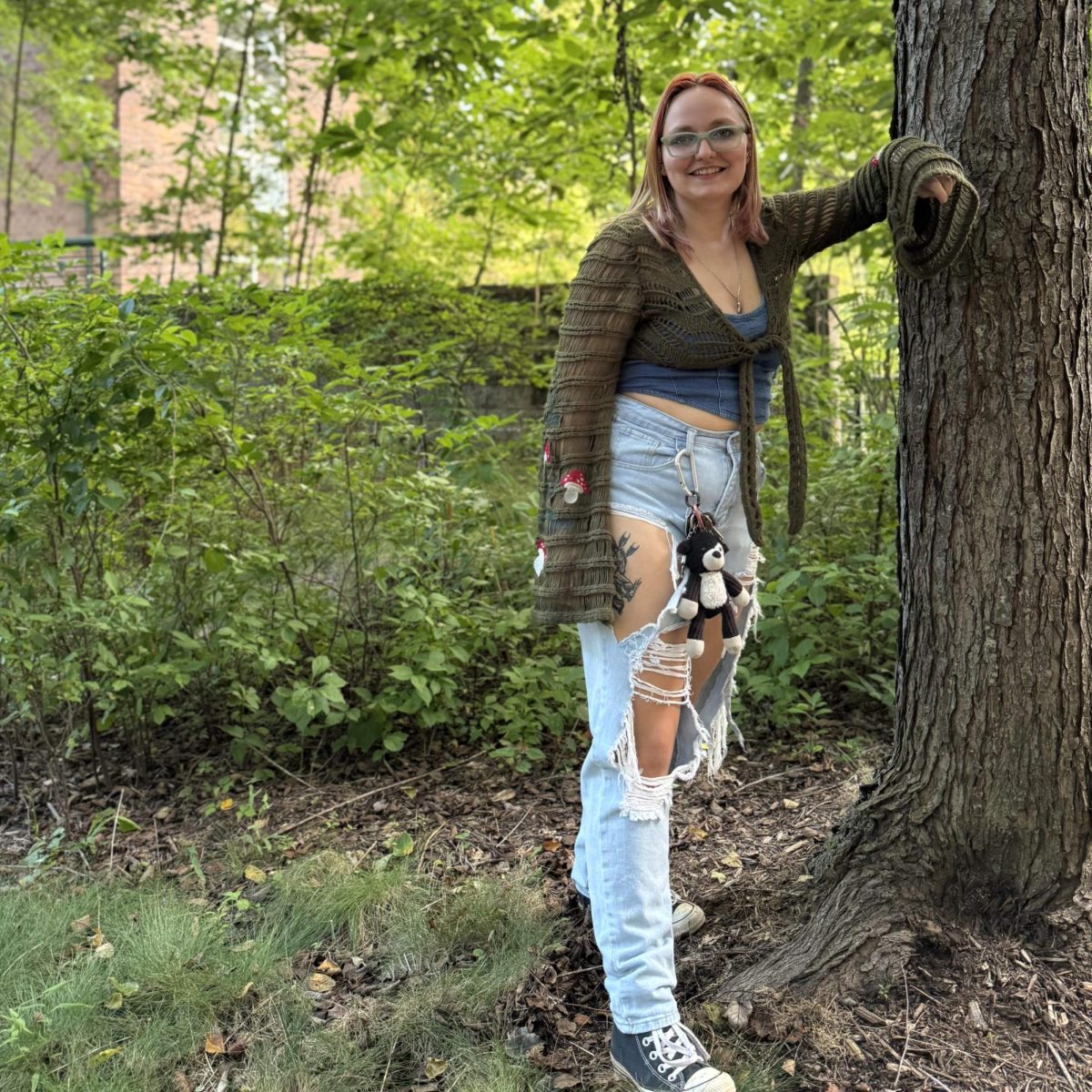Kendall Anthony-Busbee
Contributor
[email protected]
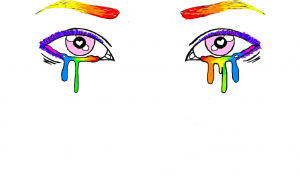
At the center of many gender-related issues lies an absence in understanding and visibility. Through their connection as a member of Asheville’s LGBTQ+ community, one individual shares their experiences with life and being transgender.
Licensed clinical social worker and transgender man Cole Armbrust reflected on certain experiences growing up that prove memorable in affirming his gender identity.
“As a small child, I remember having moments with male friends and feeling so similar to them and belonging in their circle,” Armbrust said. “I resisted wearing traditionally female clothing and felt most comfortable in male-presenting clothes.”
Armbrust’s childhood took place in Jupiter, Florida where doctors assigned him female at birth. Living in Jupiter, Armbrust experienced limited exposure to LGBTQ+ individuals.
“I didn’t know that being a boy was an option,” Armbrust said.
Raised on military bases until middle school, Armbrust recalled conversations about gender identity strained by a lack in positivity and encouragement.
“I’m having trouble finding memories as a young person that made me believe that it was OK to explore gender identities,” Armbrust said.
Armbrust’s initial experience with gender mirrored that of many within the community.
“Until I was an adult, I did not realize that gender was safe to explore and that taking steps to find congruence between my gender identity and my presentation was even possible for me,” Armbrust said.
Most often, children know their gender identity but their childhood environment does not offer encouragement for the child to freely express that desire, according to Kara Catrelle, an analytical psychotherapist specializing in sexuality and gender-related issues.
“By the age of three, most children categorize their own gender typically based on feedback and reinforcement from their environment and the gender stereotypes that exist within it,” Catrelle said. “It can be confusing for children to have innate feelings about their gender that do not match the stereotypical gender norms existing in their families and social environments.”
While Armbrust, 36, began transitioning later in life, gender and being male were quiet thoughts he contemplated for many years prior to transitioning.
“I recall in childhood my body not ‘feeling right’ but I didn’t have much more connection or awareness to what was causing those feelings,” Armbrust said. “As a teenager, when I started dating, I began to notice that I really felt dissatisfied and disconnected from my body. I associated it initially with my self-esteem or weight issues, but I had never traveled down the road of considering dysphoria.”
According to Olivia Shumate, an outpatient therapist at Appalachian Counseling and Psychological Services, many people experience pressures to adhere to cisgender roles as they age into adulthood.
“This pressure starts when people start to explore ‘Why doesn’t this feel right for me?’ It is the feeling of discordance that pressures people at a young age to find their own label to know where they do fit in the community, to find peers and safe places to be themselves,” Shumate said.
During Armbrust’s time in graduate school and through his coursework, the realization he was indeed experiencing gender dysphoria came to light.
“When I presented as female, I showed up in the world as a butch lesbian, so a tremendous amount of my need for presenting as ‘male’ was met through butch clothing and body language. Over time, I became more and more dissatisfied with my presentation as female but was terrified of losing all that I had worked so hard for in my life; my marriage, my kids, my practice and my family and friends,” Armbrust said. “I had so much fear because I encountered so few opportunities of affirming support, that I ignored my beliefs that I was actually male.”
According to Catrelle, when individuals experience any form of oppression,basic needs are often not met. Needs such as emotional support become compromised, leading to toxic stress and repeated trauma on a regular basis.
“In my professional experience, I have witnessed trans-identified clients repress or hide their gender identity which led to substance abuse, depression, anxiety and sadly sometimes suicide. As an analytical psychotherapist, I have seen mental health issues form as a result of repressed or suppressed parts of the self,” Catrelle said. “Ideally, we encourage each other to be our authentic whole self which includes acceptance and support for all expressions of gender and sexuality.”
Allowing himself to reflect inwardly upon his gender identity enabled Armbrust to acknowledge who he truly is.
“Once I started to think out loud and discuss my gender identity, expression and presentation, I realized how much I wanted to become a more authentic version of myself,” Armbrust said.
Upon visiting his doctor and obtaining the approval to begin using hormone replacement therapy, Armbrust decided to share his decision with someone close to him.
“Their response was very negative and unsupportive, so I ignored the vials of testosterone in my house for another seven months,” Armbrust said. “I denied myself. I denied that gender was really a difficult thing for me. I denied that I was supposed to be a man.”
Feelings of rejection can have an unprecedented impact on how people feel about themselves, according to Shumate.
“People may start to feel hatred toward themselves by internalizing ‘If I wasn’t this way I could be loved.’ I feel this is actually what manifests in people to have a gender dysphoria diagnosis,” Shumate said. “It is really their reaction to being unaccepted when they show their true gender expression.”
Contrary to her personal standpoint, Shumate said being transgender, and more specifically, gender dysphoria, exists as an officially classified disorder.
“I do not look at it as a disorder. I feel saying transgender people have a ‘disorder’ continues to support the stigma of it ‘being a phase’ or not a real and authentic way to be human,” Shumate said. “None of this is true. People who identify on the gender spectrum are not wrong or confused, they are acknowledging their true self.”
Through therapy and newfound support from those around him, Armbrust eventually began his hormone replacement therapy and in doing so realized a daunting need to come out to his friends and family.
“I was terrified of losing them for something that I feared was a selfish choice: to experience actualization of who I truly am, especially when I was able to tolerate existing as a butch lesbian,” Armbrust said. “When I came out, I chose to do so in writing; I wanted to give myself the freedom to say everything that needed to be said without the immediate responses of others.”
The experience turned out to be surprisingly positive for Armbrust.e was met with open arms from those he shared the news with.
“I wrote an email to my close friends and family and received immediate responses of support and willingness to learn about transness in order to have more availability to be supportive,” Armbrust said. “Then I moved on to social media and came out through a lengthy post on Facebook. I was met with an overwhelming amount of support and praise. I was shocked that people seemed to come out of the woodwork to provide words of encouragement. People commented about my bravery, which was never a word I would use to describe my actions.”
While the physical changes resulting from hormone replacement therapy seem slow to Armbrust, those around him affirm his transition through commentary on the changes they see.
“I have many people that comment on the physical changes, like the shape of my face and the deepness of my voice being very obvious to them,” Armbrust said. “I find myself feeling regret for not beginning my transition journey earlier in my life because of the time lost.”
What remained for Armbrust was a professional obligation, for him to share his transition with his clients.
“I wanted my clients to have the opportunity to be connected with other therapists if my transition was difficult for them,” Armbrust said. “I work with amazing individuals and they have been excited and supportive of my transition, including making jokes when I have a squeaky voice moment. I feel incredibly fortunate in my experiences.”
Armbrust still struggles with gender dysphoria, but taking the step to have top surgery proved beneficial in his gender identity journey.
“I had top surgery recently and removing my breasts actually showed me how much dysphoria they were causing,” Armbrust said. “The absence of them made the issues with them much more apparent and made me even more grateful for having had the opportunity to have the surgery to take a step further in making my body match who I am.”


![Brooke Pedersen [second from the right] and Luis Reyes [right] hold banners during the Wrap The Woods event.](https://thebluebanner.net/wp-content/uploads/2025/09/ELIZABETH_PRITCHITT_IMG_3470-1200x804.jpg)





